Your dog comes bouncing up to you after exploring the yard. And the first thing you notice? A healthy coating of dirt all over their snout. You know what that means. Once again, they’ve dug into the garden and helped themselves to a snack of dirt. WHY? You spent HOURS researching the best dog food on the market. They get plenty of treats throughout the day. You even pretend to look the other way when someone in the family tosses them a pickle from the table. So why this crazy desire to eat DIRT? You’re not alone in your frustration. Dogs eating dirt is one of those mysteries that troubles many owners. It seems bizarre, strange, and disgusting. But, as it turns out, there may be a reason for the habit.
Geophagia
Dogs eating dirt isn’t new. It stems back to the primitive desire to go after anything with a strong scent. This includes everything from trash to goose poop. We may not always understand it, but it’s part of canine nature. Wolves – and dogs – scavenge. They forage through carrion (decaying bodies) and the dirt beneath. We consider both vile and would never approach. But to your pup? It smells wonderful. And they may find the texture appealing in their mouth. It’s different from kibble or canned food. So while we think there’s no possible way soil can taste interesting, dirt appeals to them.
“Dogs like to dig into and consume all kinds of smelly, pungent things, like trash, kitty litter, and toilet paper. For these dogs, dirt is a delicacy, and they are eating it simply because it’s what they like to do.”
~Oscar E Chavez, BVetMed, MRCVS, MBA
When a dog (or anyone, for that matter) consumes non-food items, it’s called pica. This can include anything from grass to sticks to trash. If they narrow their focus to dirt, it gets the specific label of geophagia. (Which sounds much cooler than “my dog eats dirt”) It’s often a phase dogs go through and then grow out of. If you see it happen once and then never again, you probably don’t need to worry.
However, it CAN turn into a habit. And when you see your pup head for that spot in the yard over and over again, it’s time to take notice. Because dogs eating dirt isn’t just strange to us, it has some potential roots in your dog’s health.
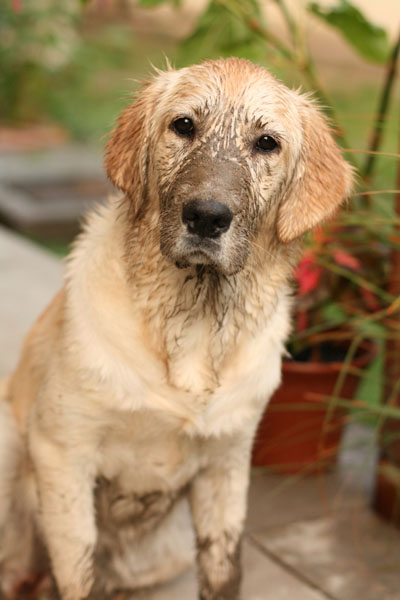
Causes for Dogs Eating Dirt
“In most cases, geophagia is behavior-driven. It can be as simple as boredom or more compulsive in nature,” says Dr. Kristi Flynn, Assistant Professor at the Department of Veterinary Clinical Sciences at the University of Minnesota College of Veterinary Medicine. Maybe dogs eating dirt supplies something new to break up the tedium of the day. It’s different from the usual toys in their toy box. And digging provides a fresh activity to running around the yard. You’re not fond of receiving muddy kisses, but the dirt-eating habit may indicate that your canine lacks mental stimulation in their life.
When was the last time you brought a new toy home? Or participated in a game of fetch? No one likes seeing dogs eating dirt, but the answer is often an easy one to resolve. If you break up the habit early, you prevent the compulsive need to chow down on the soil.
Health Concerns with Dogs Eating Dirt
Unfortunately, behavior isn’t the only reason dogs turn to eating dirt. There ARE underlying health concerns that can prompt the sudden need to devour soil.
- Anemia: Anemia is low red blood cells or hemoglobin. Many things can cause anemia. And it prompts dogs to eat dirt because you find iron in the soil. They’re trying to replace the deficiency.
- Hormone Problems: Hypothyroidism is one of several hormone problems that interfere with the uptake of nutrients. Without a functional digestive process, you see dogs eating dirt.
- Nutritional Imbalance: Dogs on homemade diets often lack critical minerals and nutrients. And what do you find in the dirt? Copper, calcium, phosphorous, selenium (NUTRIENTS!). Their bodies know what they’re missing but not how to get it. So they turn to eating dirt.
- Upset Stomach: You’re more likely to see dogs eating grass if they feel nauseous, but some dogs turn to dirt.
If your pup starts eating dirt on a routine basis – or if it’s a new thing – head to the vet. They need some lab work to rule out the above concerns. Your dog’s doing their best to rectify the problem, but dirt isn’t going to cut it. It CAN lead to further problems, though.
Consequences to Geophagia
Okay, so it’s really disgusting to see your dog snacking on dirt. And you probably avoid that puppy kiss for a while. But is it THAT bad? You bet! Dirt is…well, it’s dirt. It’s not sanitary. And when you start considering everything IN dirt, you’re going to get a little queasy. (Well, assuming you weren’t already queasy about the whole dogs eating dirt thing)
Dirt often contains pesticides, fertilizers, and other chemicals. You probably take care to use pet-safe products in your yard. But what is your dog getting into elsewhere? If they consume enough soil, they can end up in trouble FAST. You want to nip the habit in the bud for that reason, alone!
What else comes in your dog’s favorite dirt patch? Rocks, mulch, and sticks. A solid chunk of rock could break a tooth OR lead to a choking hazard. Cocoa bean mulches smell AWESOME, but they produce similar toxicities to chocolate. And sticks can puncture the gums, the esophagus, or the lining of the stomach. Dogs eating dirt often lose themselves in the process, and they don’t pause to set these objects out of the way.
And then there are the things NO ONE can see: parasites. The eggs of these intestinal parasites LIVE in dirt:
- Hookworms
- Roundworms
- Whipworms
Many parasite eggs survive for YEARS. Not to make you squirm, but a recent study of 288 parks throughout the United States found 85% of the parks turned up positive parasite samples. (So, um, always wear your shoes) Dogs eating dirt can have serious consequences.
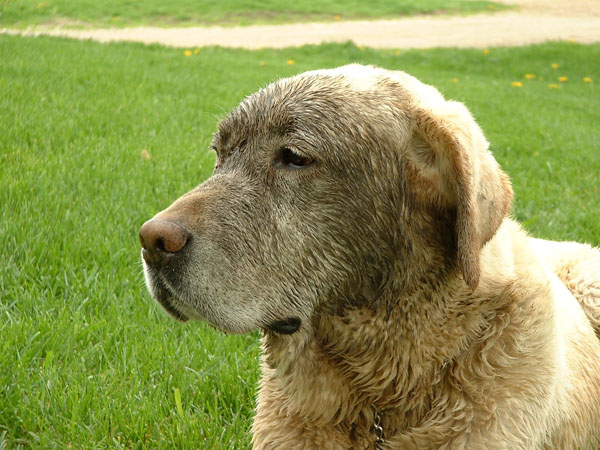
Breaking the Habit
Now that your skin’s probably crawling, let’s focus on preventing dogs from eating dirt. It IS possible.
First and foremost, make sure you’re doing everything you can to keep your dog happy and active. A canine receiving the proper physical activity and mental stimulation won’t turn to soil snacking to alleviate the boredom. They’ll stay relaxed, with no need to get into trouble or dig in the yard. You can also explore fresh training routes to help stimulate your kiddo’s brain.
Then you need to set up a barrier between your pup and the dirt. This can be a genuine obstacle. Fences or covers prevent access. Or you can walk your dog around the yard on a leash to avoid dirt patches. If that’s not up your alley, provide a distraction when they drift toward the soil. Use a verbal command or hold up a favorite toy to gain their attention. It breaks the habit by running interference.
Oh, and remove any potted plants around the house. You don’t want to provide temptation while you’re working so hard.
If you’re feeding a homemade diet, talk to your vet. They’ll probably refer you to a board-certified nutritionist to help you correct the imbalance. It’s the best option to get your dog’s health on track.
Dirty Habit
Dogs eating dirt drive us up the wall. It seems so – well, it’s disgusting. And it can have risky health consequences. As soon as you see it turning into a habit, make an appointment with your vet to figure out what’s going on. Once you have a better understanding of the big picture, you can start breaking the habit.
Then you’ll never have to wince when you see that puppy snout coming your way.

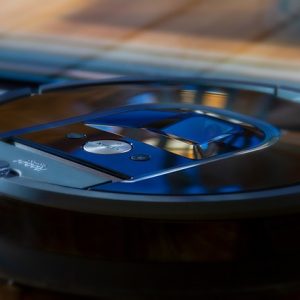
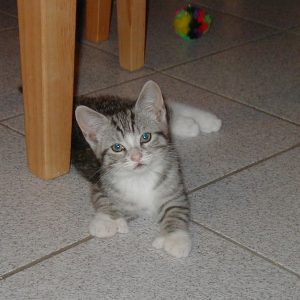


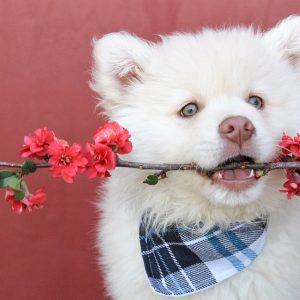

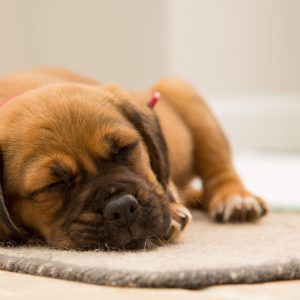
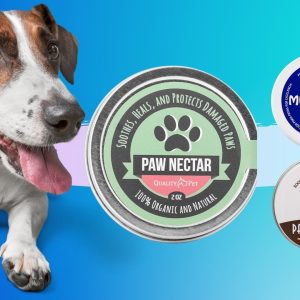

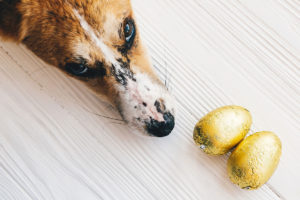

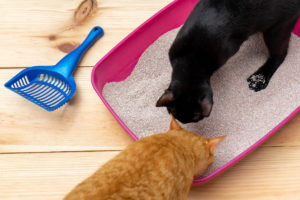
No comment yet, add your voice below!